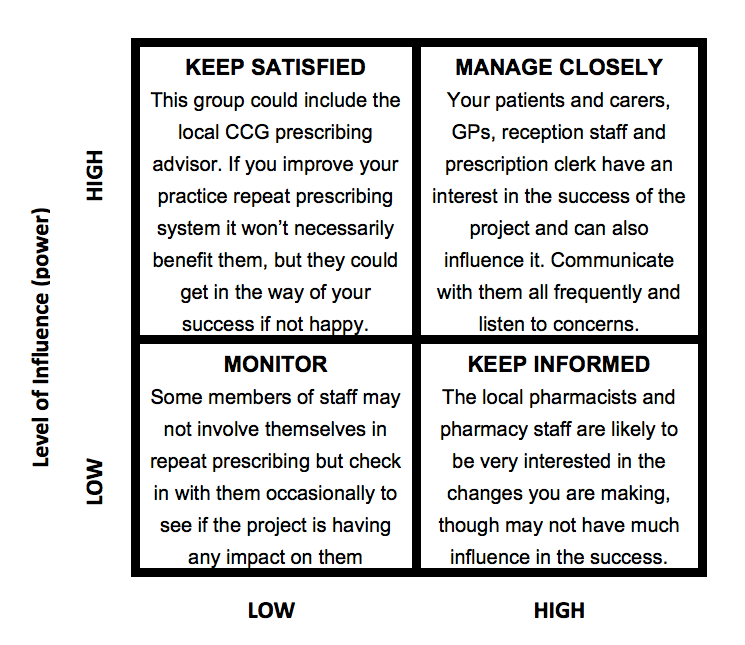A communication strategy plans how to spread the news of your improvement project. It includes both who to inform, and how to do so.
Download RCGP Quick guide: Communication strategy
Simple improvements, such as increasing the number of patients who achieve their target blood pressure are unlikely to warrant a communication strategy. However if you do discover interventions that work well in the context of your practice, you may want to put together a strategy to plan how to share your learning across a wider network, for example your CCG or cluster.
More complex improvements, such as re-designing your repeat prescribing system to reduce errors or waste or area-wide initiatives such as diagnosing cancer at an earlier stage in the illness are likely to benefit from a more strategic approach to communication.
Improvement projects that cross boundaries between practices or between primary and secondary care, especially those that may have external funding will benefit from using Stakeholder analysis when planning you communication (more details below).
How to
- What is the aim of your communication?
In the example of redesigning the repeat prescription system, be clear about whether you are asking for patients for their input into the design of the new system, or if you are informing them of some changes to the process they usually use.
- Team involved. Who needs to be involved in delivery of the message?
In our example, many people are involved in the management of repeat prescription requests. Make sure you identify all these people (reception staff, GPs, nurses, trainees, pharmacists) so they are all aware of what message they need to pass on to the patients.
- Target audiences. Who needs to know about the project?
In our example this would be the patients, relatives, carers, care home staff and all the local pharmacies.
- The message needs to be tailored to the audience.
It can be very useful to give information about why the change is being proposed and that you are ware there may be some difficulties at first, though feedback is welcomed.
- Which channels will you use?
Consider using a wide range of different ways of passing the message to maximize the coverage. Consider use of the practice website, social media sites such as a practice facebook group or twitter account, messages on prescriptions, practice newsletter, emails to patients. Direct mailing of information can be effective, though expensive both in terms of postage costs and time spent preparing letters, so may not be the most efficient route.
- When do you wish to achieve delivery of your message?
If you are planning a very gradual introduction of changes then this will influence which channels you use.
- Consider the effectiveness of your strategy.
This can be formally measured by using a survey which might help to guide what communication methods you use in the future. However it is worth asking all staff to listen out for patients who say they were unaware of changes and ask these patients what they feel would have been the best way of informing them.
A simple way of analysing ‘Stakeholders’ in your project is to use an ‘Importance-Influence’ Matrix. It reflects that people have different needs according to how interested they are in your project and how crucial they are to the success of the project. In our improvements to the repeat prescribing system.
Step 1: Identify all the people who may have any interest in your project, all the people who maybe affected by it and everyone who has an influence of whether it succeeds or not.
Step 2: Decide whether they are likely to have high interest or not (how much will the change affect them) and how much influence (power) they have in affecting the outcome of the project.



